Hockey demands lightning-fast precision and explosive intensity. Players push themselves to their absolute limits, delivering rapid, powerful puck strikes while enduring immense physical and mental pressure.
In the quest for peak performance in hockey, different techniques are always emerging. One of the most interesting methods is believed to be red light therapy. Appreciated for its relaxing and health-enhancing properties, red light therapy has become one of the non-invasive ways to enhance sports performance.

Muscular Benefits of Red Light Therapy in Hockey
Enhanced Strength and Muscle Power
In hockey, shooting shows how tough you are because it involves an athlete's leg, trunk, arm leg, trunk, and arm muscles synchronization if they want to hit hard. This power should explode so that one may strike effectively. So here comes red light therapy.
Red light therapy increases adenosine triphosphate (ATP) by stimulating mitochondria in our cells, which are responsible for producing energy[1]. The ATP is what drives muscle contractions that are needed in order to make swift and firm motions, such as a powerful ice hockey shot. When there is an increase in ATP synthesis rates within muscles, they become capable of generating greater force, hence enhancing their rate of contraction and at a shooting speed.
Red light therapy increases motor unit recruitment as well. In simple terms, it means that a larger number of muscle fibers activate during a given movement. Because of this, the players are able to use better coordination to generate greater force in every shot for that extra pop when trying to outplay goalies.
1.2 Improved Neuromuscular Coordination
The athletes involved in the sport of hockey are well aware that raw strength doesn't suffice. Timing and accuracy must be for a perfect shot. Red light therapy increases neuromuscular coordination, i.e., the synchronization of muscle movement with the signals of the nerve.
The players can perform precise shots even in high-pressure game situations due to their increased neuromuscular control. This is done by RLT, which facilitates stronger linkage between the brain, nerve, and muscle so that players can move their bodies well. This becomes a significant aspect, especially in rapid games where one has to choose between scoring and losing a good chance within a fraction of a second.

2. Energy Production for Peak Performance
2.1 Boosting Mitochondrial Function
Hockey necessitates endurance and intensity but is not limited to brief splurges in pace/power throughout the sixty-minute game time frame. The athletes engaging in intense matches have energy depletion challenges, which red light treats by enhancing the activity of the mitochondria.
The mitochondria are responsible for converting oxygen and nutrients into ATP, thus fueling all movements across the ice. By enhancing mitochondrial efficiency, RLT guarantees that at no time will the hockey player fall short of the energy needed to keep performing at the highest level up to the very end of the game. Players can, therefore, produce strong, fast shots right until the last term, thus avoiding the energy dips that often come at the closing stages of a game.
2.2 Enhanced Oxygen Utilization
Apart from all these factors, one crucial factor for athletic performance is oxygen delivery in the body. Hockey is also an event where an athlete should perform aerobically and anaerobically. Red light therapy thus enhances the uptake of oxygen among athletes and optimizes muscle efficiency in utilizing oxygen.
The higher amounts of oxygen availability to a player would not allow him to feel fatigued but help in maintaining powerful and accurate shots conditioned even under some physical stress.
3. Performance Improvements Through Red Light Therapy
3.1 Increased Shot Accuracy
If we talk about goal scoring, a player should have accuracy as well as power. Imagine a hockey player getting a clear opportunity to score, only to hit the post by a few inches. The accuracy of a shot represents the sum of perfect and correct movements, control of muscle, and focus, which can be treated with red light therapy.
RLT does have a significant impact on the central nervous system. This promotes neuroplasticity, which enhances the ability of the brain to recorrect motor control. By improving the signal transmission between the brain and the muscles, players can hit their shots better while in challenging conditions.
RLT not only brings faster recovery to muscles but also tends to reduce that fatigue, making players sharper and more focused at critical moments. At the same time, their well-placed shots consistently get more accurate, and the chance of hitting just the right spot on the puck is enhanced.
3.2 Maximizing Strike Power
The physics of an awesome slapshot exists in that simple formula: more force equals more speed. But how does a player get maximum force every time? Red light therapy strengthens the muscle groups and connective tissues that do the shooting.
Hockey players keep repeating shoot action several hundred times in practice and matches. This repetitive action gradually causes muscle fatigue and thus reduces power in shooting. This is what RLT tries to do: mitigate muscle fatigue by improving endurance. Making muscles stronger and more resistant helps keep them firing longer at top power so that players can continue performing quick and explosive shots until the very end.
4. Recovery Benefits of Red Light Therapy
4.1 Accelerated Muscle Recovery
Playing hockey is tough on the body, and it’s essential to recover quickly after playing two games in a row or while participating in a competition. Red light therapy helps reduce inflammation and promotes the repair of wound tissues When it gets inside muscles leading to increased blood circulation, red light enables faster recovery from microtears caused by vigorous sports activities.
After every game, many hockey players undergo red light sessions, which help to reduce conditions of soreness, swelling, or stiffness after repeated shots, body checks, or sudden sharp turns on the ice. Recovery is thus speedy and prevents burnout during such an intense playing schedule.
4.2 Injury Prevention Strategies
Every athlete's worst nightmare is a season-ending injury, but the vast majority of such occurrences can be avoided. Injured tissue reconstruction can include the formation of enough stable and healthy collagen fibers, which make up the body's connective tissues - especially ligaments, tendons, and cartilage. Red light leads to the increased synthesis of the collagen protein necessary for these tissues.
RLT addresses tissue malnutrition through better blood flow and oxygen supply to muscles. This way, it reduces the chances of getting strains, pulls, or tears happening in abrupt high-force movements like slapshots. Thus, hockey players employing this technology have been found to have stronger muscles and connective tissues, eventually becoming less vulnerable to injuries.
Final Thoughts
Split seconds and millimeters can make or break a player in sports like hockey. Red light treatment stimulates ATP production, improves NM coordination, and optimizes oxygen use. For an athlete like a hockey player who wishes to step up his level, red light therapy is probably the magic wand. It is becoming clearer that red light therapy benefits go much beyond just wellness and recovery, giving players an all-physical and mental edge against their competitors.
References
- Glass GE. Photobiomodulation: The Clinical Applications of Low-Level Light Therapy. Aesthet Surg J. 2021 May 18;41(6):723-738.https://europepmc.org/article/med/35043142.
- Borges LS, Cerqueira MS, dos Santos Rocha JA, Conrado LA, Machado M, Pereira R, Pinto Neto O. Light-emitting diode phototherapy improves muscle recovery after a damaging exercise. Lasers Med Sci. 2014 May;29(3):1139-44. https://pubmed.ncbi.nlm.nih.gov/24258312/



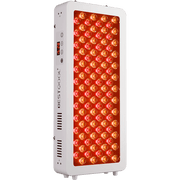
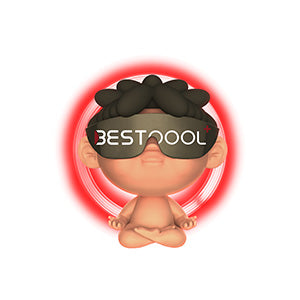








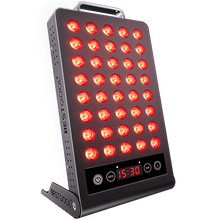
 Small
Small
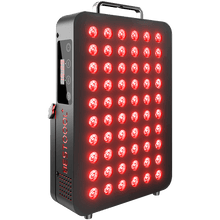
 Moderate
Moderate
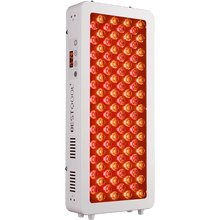
 Moderate
Moderate
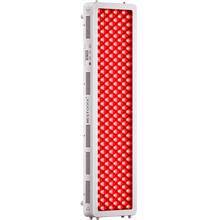
 Moderate
Moderate
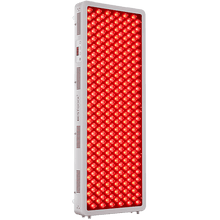
 Full
Full



